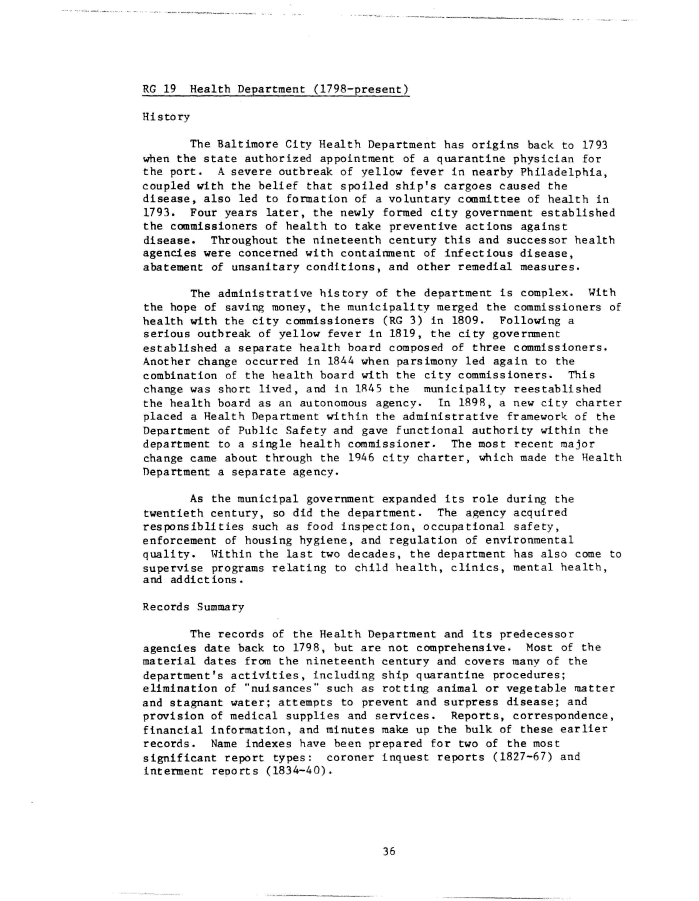|
RG 19 Health Department (1798-present)
History
The Baltimore City Health Department has origins back to 1793
when the state authorized appointment of a quarantine physician for
the port. A severe outbreak of yellow fever in nearby Philadelphia,
coupled with the belief that spoiled ship's cargoes caused the
disease, also led to formation of a voluntary committee of health in
1793. Four years later, the newly formed city government established
the commissioners of health to take preventive actions against
disease. Throughout the nineteenth century this and successor health
agencies were concerned with containment of infectious disease,
abatement of unsanitary conditions, and other remedial measures.
The administrative history of the department is complex. With
the hope of saving money, the municipality merged the commissioners of
health with the city commissioners (RG 3) in 1809. Following a
serious outbreak of yellow fever in 1819, the city government
established a separate health board composed of three commissioners.
Another change occurred in 1844 when parsimony led again to the
combination of the health board with the city commissioners. This
change was short lived, and in 1845 the municipality reestablished
the health board as an autonomous agency. In 1898, a new city charter
placed a Health Department within the administrative framework of the
Department of Public Safety and gave functional authority within the
department to a single health commissioner. The most recent major
change came about through the 1946 city charter, which made the Health
Department a separate agency.
As the municipal government expanded its role during the
twentieth century, so did the department. The agency acquired
responsiblities such as food inspection, occupational safety,
enforcement of housing hygiene, and regulation of environmental
quality. Within the last two decades, the department has also come to
supervise programs relating to child health, clinics, mental health,
and addictions.
Records Summary
The records of the Health Department and its predecessor
agencies date back to 1798, but are not comprehensive. Most of the
material dates from the nineteenth century and covers many of the
department's activities, including ship quarantine procedures;
elimination of "nuisances" such as rotting animal or vegetable matter
and stagnant water; attempts to prevent and surpress disease; and
provision of medical supplies and services. Reports, correspondence,
financial information, and minutes make up the bulk of these earlier
records. Name indexes have been prepared for two of the most
significant report types: coroner inquest reports (1827-67) and
interment reports (1834-40).
36
|

